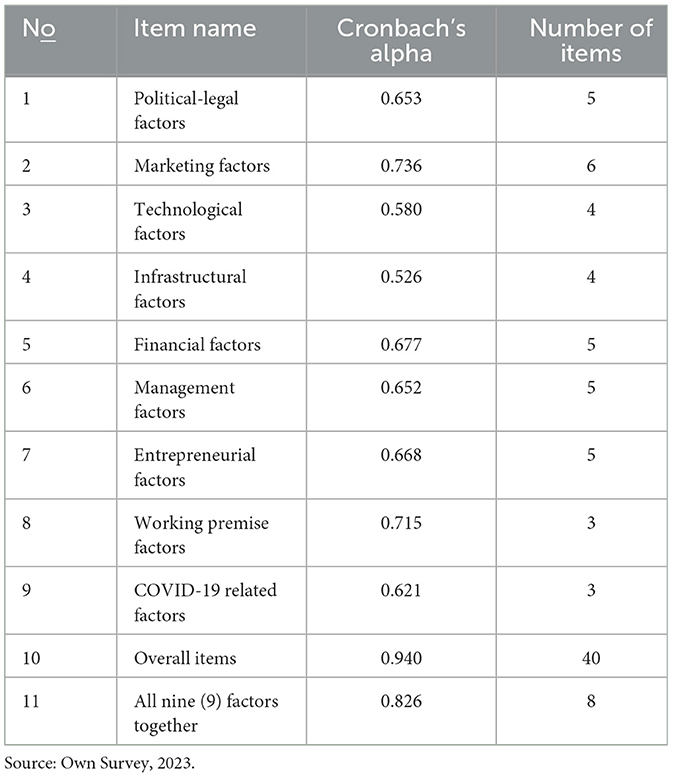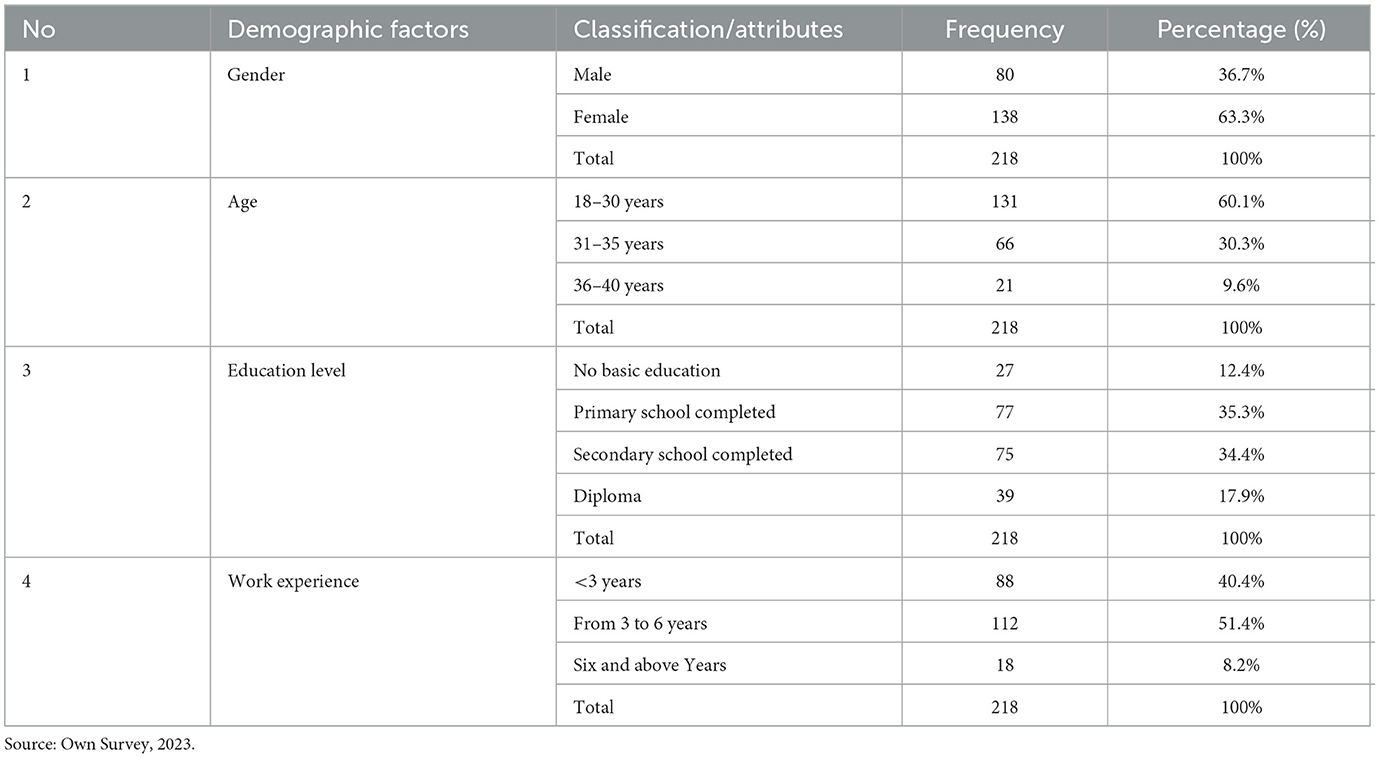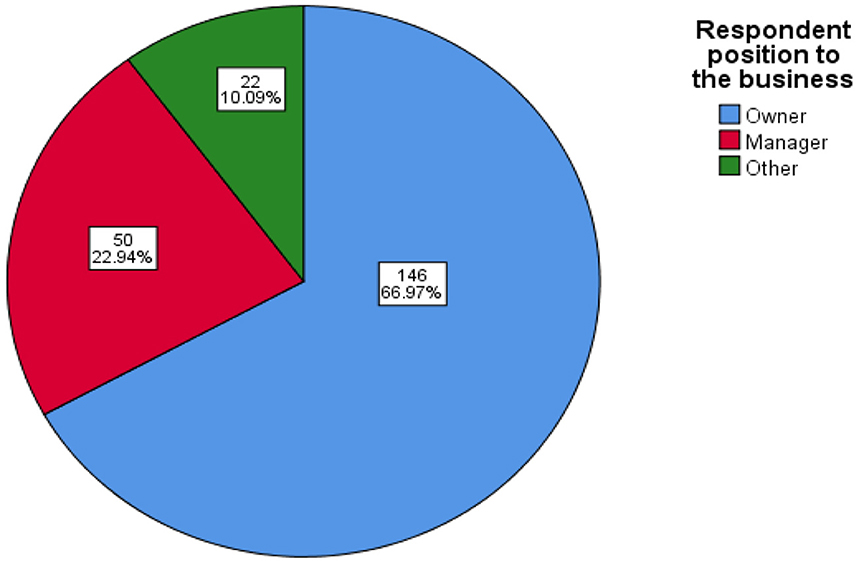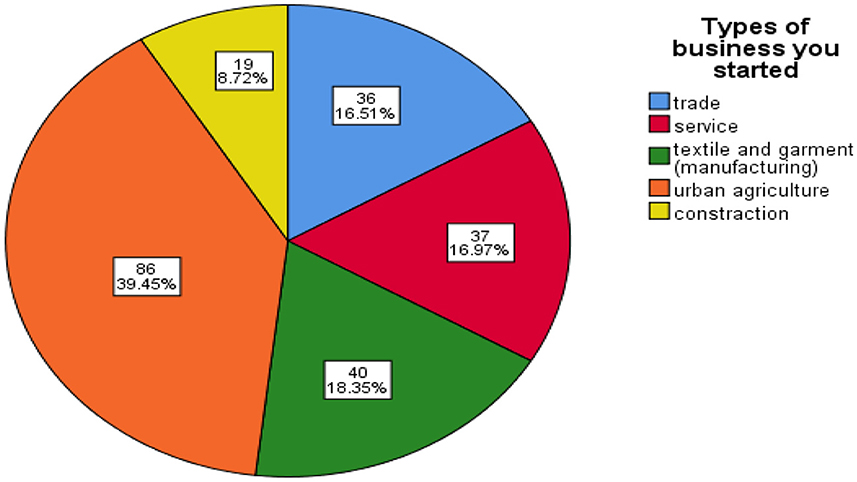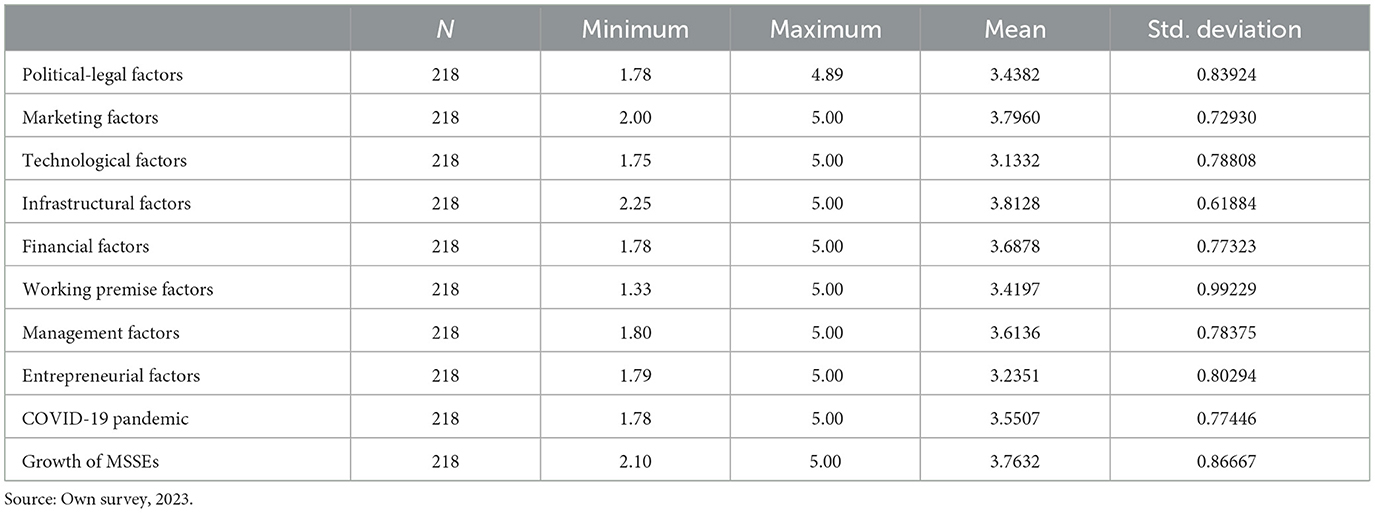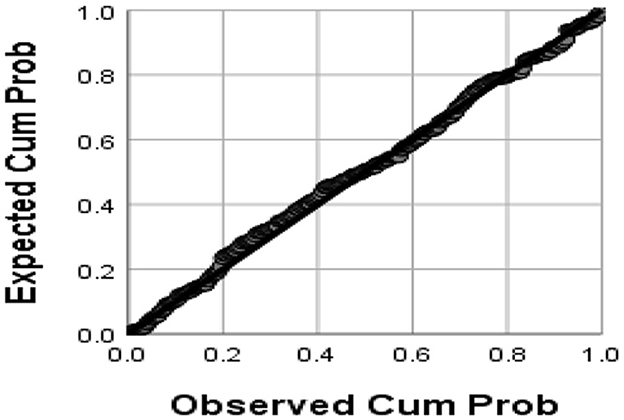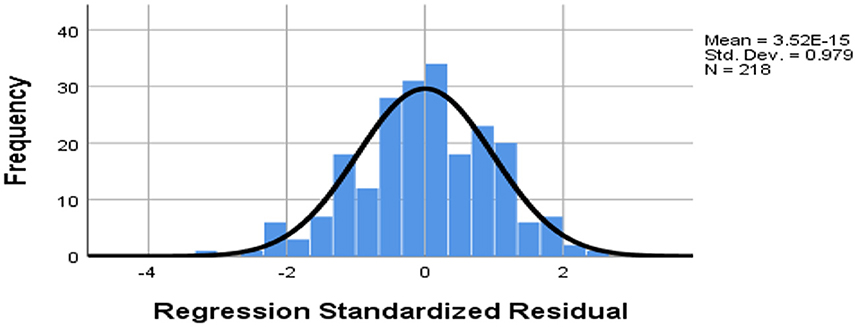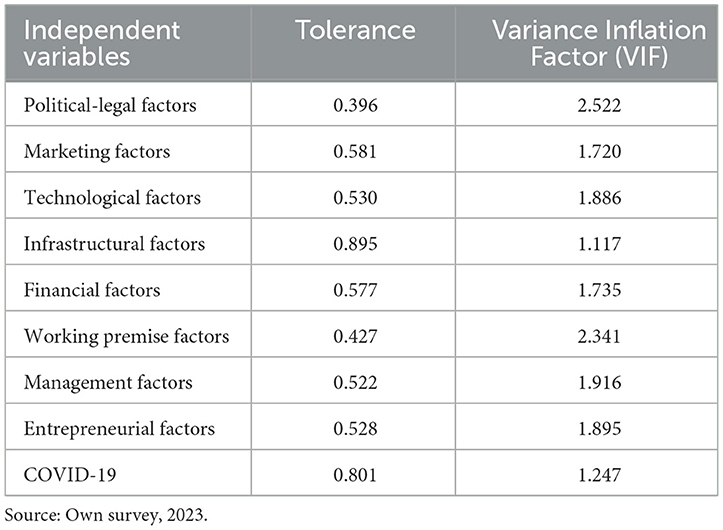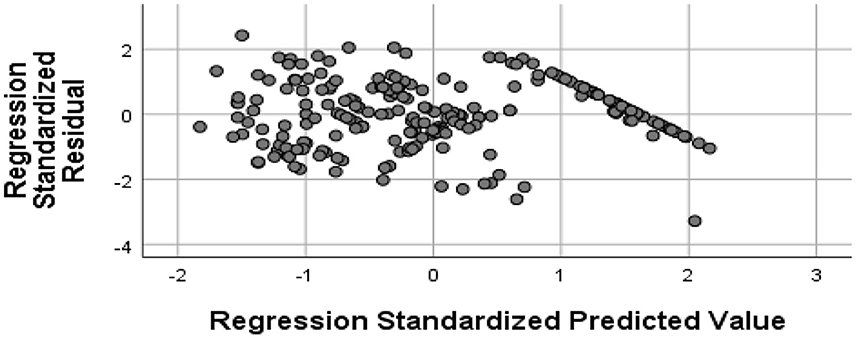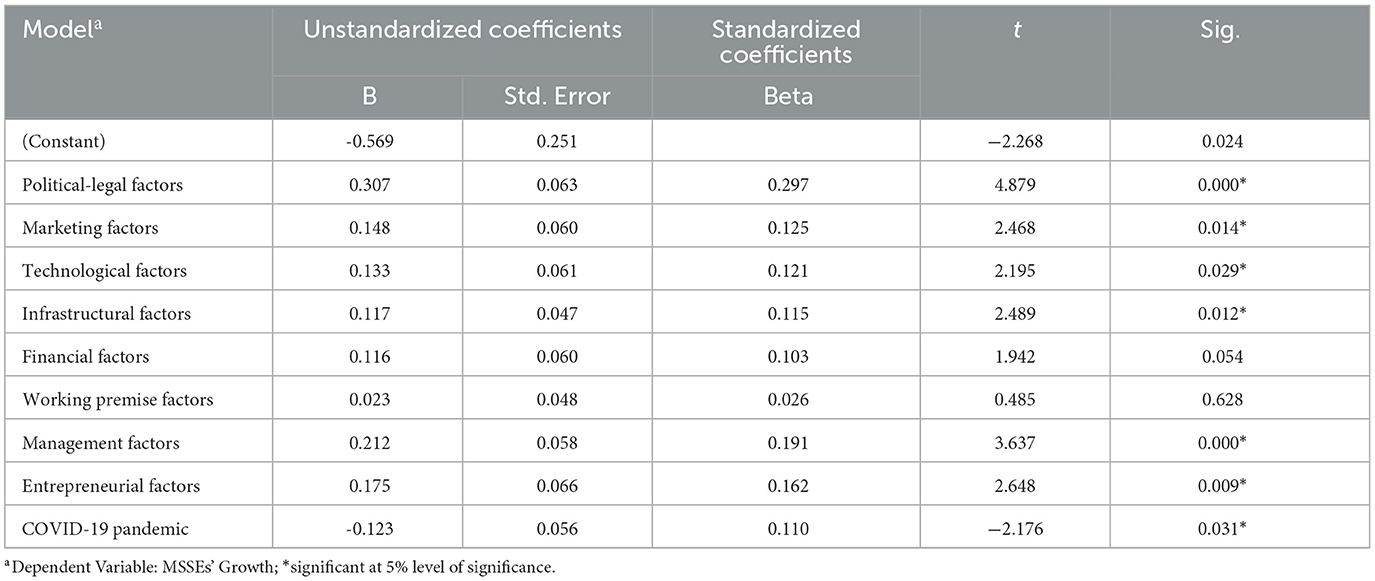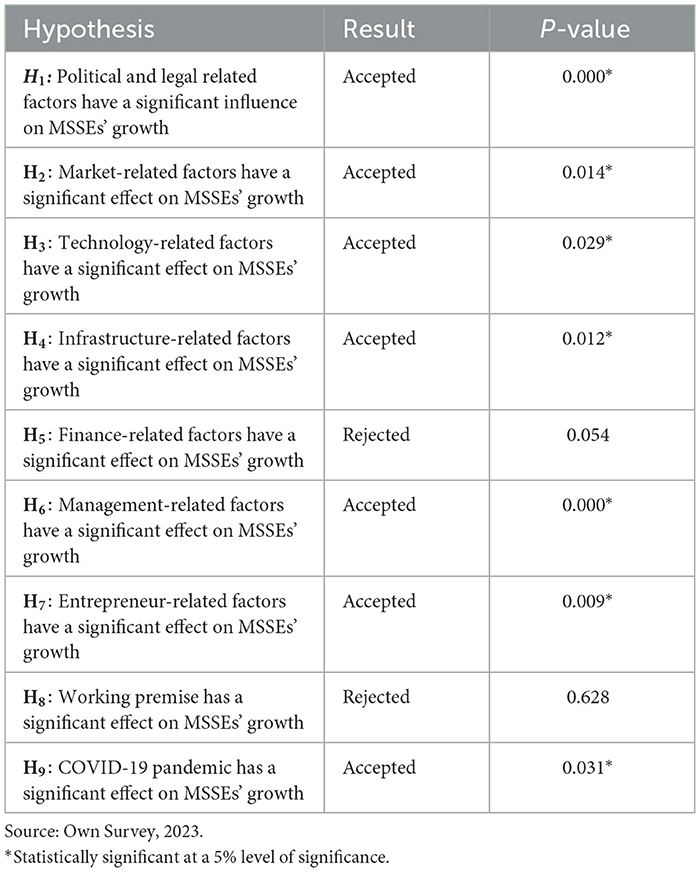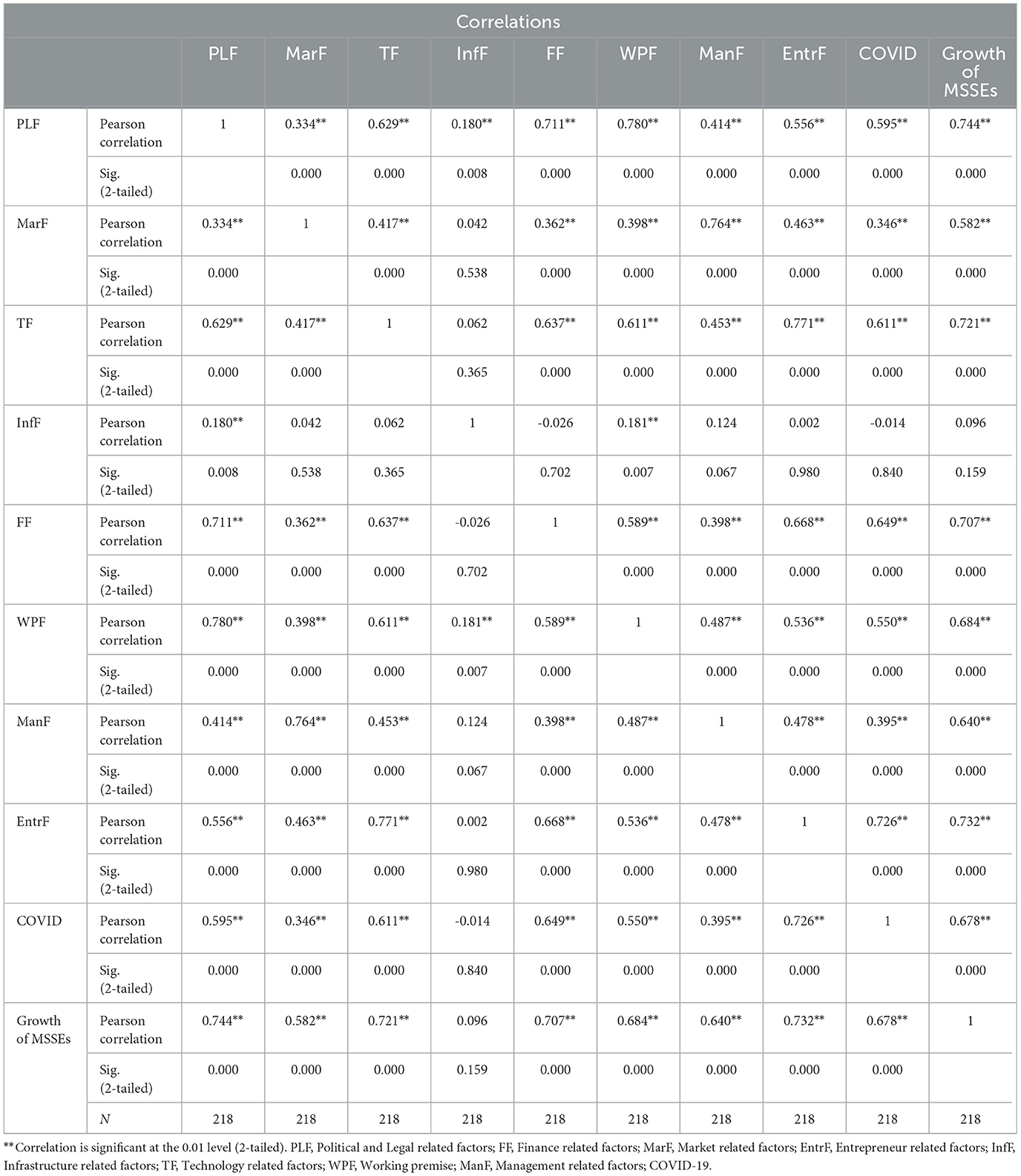- 1Department of Statistics, College of Natural and Computational Science, Debre Tabor University, Debre Tabor, Ethiopia
- 2Department of Management and Organization, Terme Vocational School, Ondokuz Mayis University, Samsun, Türkiye
- 3Department of Management, College of Business and Economics, Debre Tabor University, Debre Tabor, Ethiopia
Introduction: The growth or performance of Micro and Small-Scale Enterprises (MSSEs) is widely recognized for their important contributions to economic developments in developing countries. Small and Medium-sized businesses (MMEs) in most developing nations encounter obstacles throughout and after the start-up process. This research aims to explore the determinants of the growth of MSSEs with a special emphasis on five work sectors: manufacturing, trade, construction, service, and urban agriculture in Dessie Town, Ethiopia.
Methods: The primary data was collected using a self-questionnaire from a sample of 218 managers/owners of MSE operators. Both descriptive and inferential analysis were used to analyze the collected data. Descriptive narrations were used to analyze qualitative data as a concurrent triangulation strategy. The sample respondents were selected using a stratified random sampling method based on the type of business sector. This practical study provoked nine major issues affecting the growth of MSSEs in town: political & legal factors, including bureaucratic bottlenecks system, the COVID-19 pandemic, working premises, market-related issues, road infrastructures, management system, technology-related factors, and entrepreneurial-related factors. The results show that linear and positive substantial to strong significant relationships or associations exist between some independent variables and the growth of MSSEs. Among the expected nine determinants of MSSEs' growth and performance, only political & legal-related, management-related, market-related, technology-related, infrastructure-related, entrepreneur-related factors, and COVID-19 pandemic were statistically significant. Besides, the nominated factors explained the total variations in the MSSEs' growth and performance at a 5% significance level. Realizing this conclusion, the government and non-government bodies and operators of MSSEs should give attention to management, marketing, technology infrastructure, and entrepreneur-related factors.
1 Introduction
The factors that influence the growth of micro and small-scale enterprises are many, complex, and erratic. Micro and small-scale enterprises (MSSEs) are recognized for their significant assistance to sustainable development, including expanding the economy, creating respectable jobs, supplying public goods and services, eradicating poverty, and reducing inequality (Liu, 2017).
Endris and Kassegn (2022) affirmed that MSSEs had been a significant driver of economic growth, innovation, and technical advancement. MSMs include most private business entities in developed and developing nations. It is widely acknowledged that the performance of MSSEs has a critical role in the economic growth and expansion of job opportunities in developing nations with high unemployment rates (Tilahun, 2019).
The Micro and Small-Scale Enterprises (MSSEs) sector generates considerable employment chances and generations of income for quite a large proportion of the population in many countries (Batisa, 2019). An ILO exploratory study of firms with fewer than ten workers found that they generated 58% of total employment in Paraguay, 54% in Mexico, and 53% in Bolivia (Sehnbruch et al., 2020).
Different nations have different Micro-Small Enterprise (MSE) sector output contributions. For example, Micro and Small-Scale Enterprises (MSSEs) contribute approximately 31% of the overall GDP in Ethiopia, 13% in Kenya, and 11% in Pakistan (Weldeslassie et al., 2019).
According to the Ethiopia Federal Democratic Republic (2011), Micro and Small-Scale Enterprises (MSSEs) strategy have a great role in the development sector (Federal Negarit Gazeta, 2011). Because of this, the governments of Ethiopia have decided to form Micro and Small-Scale Enterprises (MSSEs) coordinating bodies at a regional level. Regional Micro -Small Business Development Organizations have been created to implement MSE strategies and programs. Moreover, MSSEs were at the core of the first industrial policy strategy in 2002. Similarly, within the 5-year economic framework development plans, including Plan for Accelerated and Sustained Development to End Poverty (PASDEP), GTP I, and GTP II, the expansion and development of Micro and Small-Scale Enterprises (MSSEs) has systematically been a key strategic priority (Assefa et al., 2014; ADA and First Consultant, 2017).
Micro and Small- Scale Enterprises (MSSEs) have played a great role nationwide. Ethiopia's Second Growth and Transformation Plan (GTP) stipulated the micro and small-scale enterprises sub-sector, which creates job opportunities for the community, thereby reducing poverty (FeMSEDA, 2011).
Micro and Small Scale-Enterprises (MSSEs) have faced different constraints that vary from country to country. A study of 10,000 business sectors across 80 developing nations found that smaller sectors remark credit as a severe limitation on the growth and development of business (Corti Paul et al., 2019). Micro and Small Scale-Enterprises (MSSEs) in these nations hardly ever obtain credit from conventional banks. As a result, they depend on informal sources, overdrafts, and other forms of credit like trade credit. Microfinance organizations are a significant funding source for Micro and Small-Scale Enterprises (MSSEs), but their scope and loan terms are very constrained (Weldeslassie et al., 2019). In Ethiopia, Degefu (2018) tried to assess the factors influencing the growth of Micro and Small-Scale Enterprises in metal, wood processing, brocket production sector, and another enterprise in Hawassa City.
In this paper, business performance has opted to measure the growth of Micro and Small-Scale Enterprises (MSSEs). This study tried to find the key factors influencing the growth and performance of Micro and Small-Scale Enterprises in Dessie Town, Ethiopia. This is because the previous related studies (Habtamu, 2013; Tilahun, 2019; Weldeslassie et al., 2019) in Ethiopia failed to address what happened in Dessie Town in the context and did not include both external and internal factors of Micro and Small-Scale Enterprises (MSSEs). Moreover, the majority of related studies (Kebede, 2015; Tarfasa et al., 2016) used a quantitative descriptive approach only with a small sample size. Since the real challenges of micro and small-scale enterprises change over time and place, the challenges of Micro and Small-Scale Enterprises (MSSEs) should be studied at some periodic interval and in every place found in the country; this research is designed to fill all these gaps by identifying the real challenges of Micro and Small-Scale Enterprises (MSSEs) of the time and place, and variable gaps thoroughly, in Dessie Town.
H1: Political- legal factors have a significant influence on Micro and Small-Scale Enterprise growth
H2: Marketing Factors have a significant influence on Micro and Small-Scale Enterprise growth
H3: Technological Factors have a significant influence on Micro and Small-Scale Enterprise growth
H4: Infrastructural factors have a significant influence on Micro and Small-Scale Enterprise growth
H5: Financial Factors have a significant influence on Micro and Small-Scale Enterprise growth
H6: Management Factors have a significant influence on Micro and Small-Scale Enterprise growth
H7: Entrepreneurial has a significant influence on Micro and Small-Scale Enterprise growth
H8: Working premise has a significant influence on Micro and Small-Scale Enterprise growth
H9: COVID-19 has a significant negative influence on Micro and Small-Scale Enterprise growth/performance
2 Literature review
According to Abay et al. (2014), external factors like access to credit from financial sectors, infrastructure, and working premises are important for Micro and Small -Scale Enterprises (MSSEs) growth. Other studies focused on internal (business–related) factors affecting the growth of Micro and Small-Scale Enterprises (MSSEs). The education level of business operators is the key factor that positively influences the growth of business enterprises (Sibhatu, 2018).
In Nigeria, according to Okpara (2011), the most common factors delaying the growth and performance of micro and small-scale businesses were the absence of monetary support, poor managerial skills, corruption, lack of training, shortage of infrastructure, inadequate profits, and little demand for products and services.
A study done in Thailand (Grimsholm and Poblete, 2010) reveals that several significant factors hamper Thai SMEs' growth. The key problems are a lack of access to finance, competition, barriers to trade, management competence, lack of skilled labor, low investment in research and development, and new technology. Regarding external factors, several obstacles constrain business growth; some of these are access to finance, business competition, corruption, trade barriers, and macroeconomic factors, amongst some of the most significant issues. In terms of internal factors, there are also important constraints hindering their growth, for instance, poor management competencies, lack of skilled labor, deficiencies in marketing strategies, little effort on research and development, lack of new technology, and low awareness concerning corporate social responsibility are identified as some of the most important obstacles.
Tarfasa et al. (2016) used both descriptive analysis and econometric models to analyze business-related and external factors and the relative impacts of these factors on the performance of Micro and Small-Scale Enterprises (MSSEs). The study's findings reveal that Micro and Small-Scale Enterprises (MSSEs) suffer from business-related issues (e.g., weak human resources and other assets) and external factors, including lack of access to credit, limited market facilities, and policy and regulatory bottlenecks. The study also showed that access to credit appears to be a binding constraint for small enterprises' growth as they are “too big” for microfinance institutions. Still, they are “too small” for traditional banks regarding the size of loans, reflecting the “missing middle financial intermediaries” that serve small enterprises. Hence, without a renewed focus on promoting firm growth, especially MSSEs, through improving access to warehouses, relaxing credit constraints, and improving the macroeconomic and regulatory environment, the potential for Micro and Small-Scale Enterprises (MSSEs) to create more jobs is severely compromised.
According to Batisa (2019), a linear regression model of all predictor (internal and external factors) variables is highly correlated with the outcome variable (growth of MSSEs) and contributed 67.6% to the likely growth of MSSEs in Dawro Zone, Ethiopia. Realizing these, it is essential to thoroughly analyze the factors that affect micro and small enterprises' growth in emerging rural towns that connect the farmer and medium-level cities. Therefore, this study was conducted in Dessie town to examine the factors affecting micro and small enterprises' growth and performance.
Micro and Small-Scale Enterprises (MSSEs) in most emerging nations encounter obstacles during the initial stages of development and later on. Ethiopian CSA releases that small enterprises' contribution to creating job opportunities and developing our economy is vital (FeMSEDA, 2011). Ethiopia recognized Micro and Small-Scale Enterprises (MSSEs)' significant role in household food security and job opportunities. Given the widely acknowledged significance of Micro and Small-Scale Enterprises (MSSEs) in generating income, creating jobs, and reducing poverty, all stakeholders—including governmental and non-governmental institutions—have a duty to make a concerted effort to eliminate any barriers to the Micro and Small-Scale Enterprises (MSSEs) expansion. In developing nations like Ethiopia, almost half of the work power is in Micro and Small-Scale Enterprises (MSSEs) (Tilahun Geremewe, 2018).
Although Micro and small-scale Enterprises (MSSEs) contribute a lot to poverty alleviation, they face multidimensional problems at initial and operational levels. According to the research done by Habtamu (2013), about 76.4% of Micro and small-scale Enterprises (MSSEs) in Mekelle City were unable to grow. Policymakers in Ethiopia now favor micro and Small-Scale Enterprises (MSSEs) because they are thought to be essential in achieving both the objectives of reducing poverty and fostering economic growth. Though some Micro and Small-Scale Enterprises (MSSEs) have grown extremely large and profitable, many others have failed or are not as successful as they might have been.
Other studies showed that internal and external factors had a strong positive and significant relationship with business profitability (Abera, 2012). Hence, these and other factors might affect Dessie Town's micro and small enterprise growth.
2.1 The conceptual framework
The conceptual framework (Figure 1) of the study refers to the concepts that were used to explain the ideal relationships of causes and affects (Abera, 2012; Batisa, 2019). Since the growth of MSE is influenced by internal and external factors enterprise workers need to comprehend the impacts of businesses to grasp the highest growth. In this manuscript, annual performance (capital growth) measures the micro and small-scale enterprises' growth. This is mainly because previous studies indicated that Micro and Small-Scale Enterprises (MSSEs) focus more on annual performance in capital growth than other modes of growth measures.
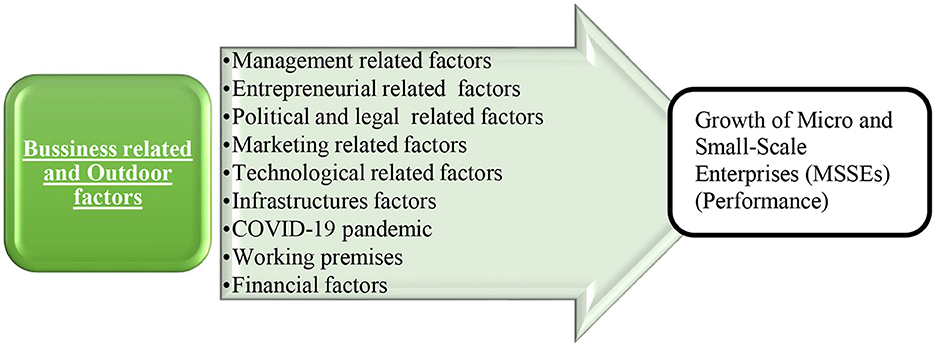
Figure 1. Conceptual framework (Abera, 2012; Batisa, 2019).
3 Research methodology
3.1 Research design and approach
A cross-sectional study design was used by emphasizing a mixed approach that triangulates the quantitative analyses with the qualitative results of the study.
3.2 Target populations, sample size, and sampling techniques
The study population consists of managers/owners of Micro and Small Enterprises (MSE) in Dessie town. The target respondents involved in the assessment are selected by using stratified sampling followed by simple random sampling at the individual respondent level. The Micro and Small-Scale Enterprises (MSSEs) focused in this study were the five categories: manufacturing, construction, urban agriculture, and trade and service sectors. From the data of the office of Dessie City Administration (2023), 494 micro and small enterprises are registered in Dessie City, which have one and above year (s) of operations. The target population was drawn from all Dessie city administration's registered micro and small enterprises.
The sample size is used when considering the collection of data. It is important to ensure that the sample contains a sufficient number of members of the population for adequate analysis to take place. The sample size is calculated using the formula of Yamane (1976). The formula is . Where: n = size of the sample, e = maximum tolerable sampling error = 5%, and N = population size.
The total number of the target population in this study is 494; then, by using this formula, the researcher can obtain a sample size of the target population, N = ∑ Nh for h = 1, 2, 3, 4, 5.
Thus, the required representative sample size is 222. Since the total number of businesses in each business sector would not be the same, a proportional allocation (Table 1) of the sample size to each business sector is calculated using the formula: . Where; is total number of samples for a sector “h” and Nh is total number of business owners in each business sector.
A stratified sampling technique is used by dividing the whole respondents into five major business sectors to identify the respondents. Then, simple random sampling was used to select individual respondents in the business sector.
3.3 Data sources, methods of data collection, and analysis
The study used both primary and secondary data as its source of information. Primary data were collected from structured questionnaires from Micro and Small-Scale Enterprises (MSSEs) operators' questionnaires. The collected data were organized and inferred into meaningful information. Descriptive analysis, Pearson correlation, and multiple linear regression analysis were used. The regression model of the MSSEs' growth with the internal and external factors can be written as follows:
Where Y is the growth/performance of MSSEs, and X1, X2, …Xpare the business-related and external factors influencing the growth of MSSEs. ui is the error term. β0 is the intercept. u1, β2 …and βp are the regression coefficients.
Thus, substituting the outcome variable: growth of MSSEs and independent variables x1= Political and legal factors, x2 = Marketing factors, X3 = Technological factors, X4 = Infrastructures factor, X5 = Financial factors, x6 = Management factors, x7 = Entrepreneurial factors, X8 = Working premises, and X9 = COVID-19 pandemic are the p = 9 explanatory variables (or the regresses) considered as internal and external factors affecting the growth of MSSEs. Thus, the specified model is
4 Findings
The data were collected from 218 owners/managers of micro and small-sized firms out of a sample size of 222 MSSEs that were operating in Dessie city administration. These owners/managers and their businesses were stratified and selected from the register of Dessie Town Investment Agency and Dessie Town Trade and Industry office. A response rate of 98.2% was attained, and all of the study respondents were found in Dessie town. Therefore, descriptive results of the demographic characteristics of respondents, correlation, and regression analysis were presented.
Reliability analysis was conducted to check the goodness and consistency of the data collection tools. Cronbach's α is used as a measure of internal consistency. The Cronbach's α for each variable in the survey design is well over the accepted limit of 0.70, as shown below, showing it is reliable. Therefore, Table 2 shows that the results extracted from the questionnaire are highly reliable.
Table 3 indicates that 138 (63.3 %) and 80 (37.7%) of the respondent managers/business owners were female and male, respectively. It can be deduced that 131 (60.1%) of the managers/business owners were in the lowest age group; 18–30, 66 (30.3 %%) of managers/business owners were in the age group 31–35, 21 (9.6%) of the managers/business owners are the age group between 36 and 40 age. Most managers/business owners (60.1%) of sample micro and small enterprises surveyed have aged between 18 and 30 years, and it has shown that the majority of MSSEs in the town are young groups that have been vital to the growth of the businesses.
Moreover, Table 3 shows most 77 (35.3%) of the owners/managers have completed primary school, about 75 (34.4%) of managers/business owners completed secondary school; and 49 (17.9%) were diploma holders, the rest 12.4% of the respondents are without basic education. Therefore, the education level of managers/business owners is projected to increase the skills of the enterprises to cope with problems and appropriate chances for business growth and improvement.
Table 3 also reveals that the work experience of managers/business owners with <3 years of experience is 88 (40.4%), years of job experience between 3 and 6 years is 112 (51.4%), and work experience groups six (6) years and above were 18 (8.2%). Thus, the more experienced owner/manager helps the business initiatives' accomplishment and growth in the town administration as well as in the country.
Figure 2 shows that the majority of the respondents, about 146 (66.97%), were business owners, 50 (22.94%) were managers, and the remaining 22 (10.09%) respondents were combinations of others like salespersons and relatives. Therefore, the business front-runners were Micro and Small business owners in the town.
Table 4 shows that the years of the business process accomplished by the respondents show that about 42.7% have 1–3 years, 50.9% have 3–5 years, and 6.4% have more than five (5) years of accomplishment. As a result, 94% of businesses employ 1–10 stable workers initially, and 6% of businesses employ 11–20 enduring employees initially. Thus, the majority of the MSSEs employed a few numbers of employees at the beginning of their operation. On the other hand, 78% of enterprises employ 1–10 permanent employees currently, and 22.0% of enterprises employ 10–20 long-lasting employees initially. Thus, the majority of the MSSEs employ a few employees currently at the time of their business operation.
Figure 3 describes among the 218 business enterprises considered in the analysis, 16.51% of respondents' main sectors are trading, 16.97% are services, 18.35% are manufacturing, 8.72% are constructions, and 39.45% are urban agriculture. Thus, the urban agriculture sector, followed by manufacturing and service, has been the majority business enterprise in the Dessie town administration which shows these sectors are growing faster than others.
Table 5 indicates the summary statistics of the nine (9) factors and growth of MSSEs obtained from the survey. The findings revealed that the grand mean and standard deviation for political and legal factors is 3.43 and 0.839 with a maximum of 4.89 and minimum of 1.78; for marketing factors, 3.79 and 0.729; for technological factors, 3.13 and 0.788; for infrastructural factors 3.81 and 0.619; for financial factors 3.68 and 0.773; for working premises 3.42 and 0.992; for management factors 3.61 and 0.784; for entrepreneurial factors 3.24 and 0.803, and the factor COVID-19 pandemic mean 3.55 and standard deviation of 0.774. Therefore, market-related factors have the highest grand mean, while technological factors have the lowest mean. Moreover, working premise factors had the highest standard deviation, while infrastructural factors had the lowest standard deviation.
The correlation coefficient Table (Appendix A) shows the correlation between MSSEs growth and potential predictors: PLF = Political and legal Factors, FF = Financial Factors, MarF = Marketing Factors, EntrF = Entrepreneur factor, InfF = Infrastructural factors, TF = Technology factors, WPF = Working premise and ManF= Management Factors. The result reveals that most of the independent constructed variables were correlated with MSSEs growth. Among potential predictors, the highest and strong relationship was observed between PLF = Political & Legal related factors and MSSEs growth (r = 0.744), followed by EntrF = Entrepreneurial factors and MSSEs growth (r = 0.732), between TF = Technological Factors and MSSEs growth (r = 0.721), and followed by variables between ManF = Management Factors and MSSEs growth (r = 0.640). Therefore, the correlation result showed that among identified determinants of MSSEs' growth, PLF = Political and legal Factors, EntrF = Entrepreneurial factors, TF = Technological factors, and ManF = Management-related factors had a significant and positive correlation with MSSEs growth at 5% significance level. Thus, all the potential factors or variables are positively and significantly correlated with MSSEs' growth/performance. Ordinary Least Square (OLS) assumptions tests were checked before fitting multiple linear regression models to safeguard the suitability of the collected data.
4.1 Linearity test
Residual plots of the regression were used to determine whether the relationship between MSSEs' growth and the possible factors such as PLF = Political and legal factors, FF = Financial factors, MarF = Marketing factors, EntrF = Entrepreneurial factors, InfF = Infrastructural factors, TF = Technological factors, COVID-19 pandemic related, WPF = Working premise and ManF = Management related factors.
According to Figure 4, the residual scatter plot shows no great alteration in the range. This indicates the expected association and prediction are linear. Thus, the linearity test is normal and alright.
4.2 Normality test
Normality can be ascertained with a histogram and a fitted normal curve.
Figure 5 shows the histogram of the standardized residuals vs. a frequency which implies several of the residuals are fairly close to 0. Moreover, the histogram is bell shaped. Therefore, no violations of the normality assumption in the data of this study.
4.3 Multicollinearity test
Multicollinearity occurs when the potential factors are strongly correlated with each other. This assumption can be verified using correlation, tolerance, and Variance Inflation Factor (VIF). The findings (Table 6; Appendix A) revealed that variables in the study have low correlation power and VIF; as a result, there is no Multicollinearity problem.
4.4 Homoscedasticity test
Figure 6 shows that error terms are distributed randomly with no certain pattern, indicating heteroscedasticity is not a serious problem for the data in this study.
From Table 7, an R of 0.89 showed a significant positive relationship among the variables which is 89%. The coefficient of determination (R2) value is 0.788. This implies that 78.8% of the total variation in Micro and Small Enterprises' growth is described by the assembled nine potential factors. However, the leftover 21.2% variations in the growth of Micro and Small-Scale Enterprises in Dessie town were produced by other unconstructed factors that are not incorporated in the model. Thus, the created dimensions of MSSEs (such as political and legal, finance-related, market-related, entrepreneur-related, infrastructure-related, technology-related and management-related factors, working premise, and the COVID-19 pandemic) are significant explanatory variables influencing the performance of Micro and Small–Scale Enterprises in Dessie town administration.
The results of the ANOVA shown in Table 8 indicate a statistically significant relationship between the nine (9) predictors (i.e., Political and legal related, finance-related, market-related, entrepreneur-related, infrastructure-related, technology-related and management-related factors, working premise, and COVID-19-pandemic) and growth of MSSEs at 5% level of significance. This result is consistent with the previous study by Abay et al. (2014) stated infrastructural and finance related factors have significant positive effects on MSEEs' growth. Besides, the overall model significance was indicated with a high F-statistic (85.775), and the model is well-fitted at a 5% level of significance.
According to Table 9, the result as regression coefficient value indicated the highest external factor that affects the growth of MSSEs was (i) political and legal related factors (0.307), (ii) internal management-related factors (0.212), (iii) entrepreneurial factors (0.175), (iv) marketing related factors(0.148) and (v) technological factors (0.133) in order.
Therefore, from the finding, six (6) out of nine (9) factors have a positive and one(1) negative and statistically significant impact on the growth/performance of MSSEs since the p (sig) value is less than α = 0.05 significance level. Thus, from identified outdoor and interior factors affecting the growth or performance of business enterprises, it can be inferred that political & legal factors, marketing factors, entrepreneurial factors, infrastructural factors, technology-related factors, the COVID-19 pandemic-related and management factors had the most statistically significant features affecting the growth/performance of MSSEs in Dessie town administration. This result is consistent with the study done by Batisa (2019). Therefore, the fitted regression is written as:
Where, PLF = Political and Legal, MarF = Market-related, EntrF = Entrepreneur related, InfF = Infrastructure related, TF = Technology related & ManF = Management related factors.
The unstandardized B coefficient of Political and Legal factors = 0.307. i.e., 100 percent variation in political and legal related factors leads to a 30.7% alteration in the growth of MSSEs, Marketing Factors = 0.148, 14.8% increase in the growth of MSSEs, Technological Factors = 0.133 indicates that a one unit alteration in technological development indicates 0.133 unit increase in the growth of MSSEs, Management Factors = 0.212 signifies that a one unit change in management factors results to 0.212 unit increase in the growth of MSSEs and related entrepreneurial factors = 0.175. However, the COVID-19 pandemic has had a negative and significant influence on the growth and performance of MSSEs. These results afford significant provision for the previous studies and used literature that advocates that the potential features (external and internal factors of MSSEs) have noteworthy consequences upon the growth of MSSEs in Dessie town administration.
4.5 Testing hypothesis from the regression result
Based on the results demonstrated in Table 9, the anticipated nine hypotheses were tested statistically with the aid of adequate and suitable practical data on the potential factors influencing the growth of MSSEs as shown in Table 10.
4.6 Qualitative (interview) results
The qualitative data collected through personal interviews of some business owners and managers showed the major problems faced while running MSEs were bureaucracies, poor infrastructures (power, transportation, and water supply), and unbalanced taxation systems. Lack of government support like access to credit, training, development, and motivational packages. Moreover, business management and knowledge of entrepreneurial-related factors are influencing the growth/performance of Micro and Small-Scale Enterprises (MSSEs).
5 Conclusion and recommendation
The study was conducted in Dessie town administration, South Wollo Zone, Ethiopia, with the key concentration of assessing the factors affecting the growth of MSSEs engaged in five different business sectors. The next conclusions are worthwhile drawing based on the research's goals and results.
Financial factors, such as strict collateral requirements from loaning institutions and banks, a lack of initial capital, high tax rates, and unbalanced interest rates of loan institutions, are the most significant contextual factors that have been identified. Insufficiency of the industry and marketing research are two marketing-related factors. Power outages and a deficiency of adequate and rapid transportation services are examples of infrastructure-related issues that impede the expansion of all types of businesses. Nevertheless, different governmental entities created various programs aimed at expanding the MSSEs sector; since the majority of the programs did not receive the proper support, MSSEs' development and competitiveness were not impacted by them.
Among the potential determinants affecting the growth and performance of MSSEs, political & legal factors, marketing factors, entrepreneurial factors, COVID-19 pandemic disease, infrastructural factors, technological factors, and management factors had the most statistically significant factors influencing the growth of MSSEs in Dessie town administration. Personal interviews of some business owners and managers perceived that external factors of business enterprises had a significant and higher influence on the growth of MSSEs than internal factors.
It is crucial to offer recommendations for remedial and supplemental actions to maximize the possible support in the development of MSSEs. These recommendations necessitate a thorough examination of the sector's impact on various factors. The Dessie town administration bodies must offer affordable alternative sources of business capital for MSSEs. This could be accomplished by negotiating with savings & loan sectors, banks, and other lending organizations to relax settled financial standards. Political and Legal aspects are found to have a highly significant positive impact on MSSEs growth. Thus, government policies and support programs need to consider the diverse nature of the MSSEs.
Marketing-related factors, management-related factors, technology-related factors, political & legal factors, and the COVID-19 pandemic are the highly significant influential factors of MSSEs' growth or performance. Hence, various approaches must be used to address these pervasive issues, as follows:
• Providing full legal rights and eliminating bureaucracy systems in MSSEs administrations.
• Provide skill training to the operators of MSSEs and form a team for idea sharing.
• Through networking, MSSEs of Dessie town and the nearest towns could be able to use common facilities such as free advertising between themselves. Lowering business sectors' manufacturing costs will improve their ability to compete.
• The capacity and skill of the businessmen must be increased using ongoing training and developments, knowledge transfer from effective businesses, and establishment of guidance and consultancy for MSSEs to be competitive and lucrative.
Data availability statement
The original contributions presented in the study are included in the article/supplementary material, further inquiries can be directed to the corresponding author.
Ethics statement
Ethical review and approval was not required for the study on human participants in accordance with the local legislation and institutional requirements. Written informed consent from the [patients/participants OR patients/participants legal guardian/next of kin] was not required to participate in this study in accordance with the national legislation and the institutional requirements.
Author contributions
EE: Formal analysis, Methodology, Software, Validation, Writing—original draft. AT: Software, Validation, Writing—review & editing. YK: Conceptualization, Data curation, Investigation, Resources, Validation, Visualization, Writing—review & editing.
Funding
The author(s) declare that no financial support was received for the research, authorship, and/or publication of this article.
Conflict of interest
The authors declare that the research was conducted in the absence of any commercial or financial relationships that could be construed as a potential conflict of interest.
Publisher's note
All claims expressed in this article are solely those of the authors and do not necessarily represent those of their affiliated organizations, or those of the publisher, the editors and the reviewers. Any product that may be evaluated in this article, or claim that may be made by its manufacturer, is not guaranteed or endorsed by the publisher.
References
Abay, H. H., Tessema, F. G., and Gebreegziabher, A. H. (2014). External factors affecting the growth of micro and small enterprises (MSSEs) in Ethiopia: a case study in shire indasselassie Town, Tigray. Eur. J. Bus. Manag. 6, 34. Available online at: https://www.iiste.org/Journals/index.php/EJBM/article/view/17147
Abera, A. (2012). Factors affecting the performance of micro and small enterprises in arada and lideta sub-cities, Addis Ababa (A Thesis). School of graduate studies of Addis Ababa University in partial fulfillment of the requirements for the Master of Business Administration (MBA) degree.
ADA, A., and First Consultant, P. (2017). Small and Growing Businesses in Ethiopia. Los Angeles, CA: ADA asbl, 3.
Assefa, B., Zerfu, A., and Tekle, A. B. (2014). Identifying Key Success Factors and Constraints in Ethiopia Development: An Exploratory Research. Addis Ababa: Ethiopian Development Research Institute.
Batisa, S. (2019). Determinants of youth based micro and small enterprises growth in dawro zone a case of mareka wereda. Int. J. Res. Bus. Stud. Manag. 6, 27–37.
Corti Paul, L., Marty, R., and Muhmuza, F. (2019). Financial inclusion and Micro, Small, and Medium Enterprises (MSMEs) growth in Uganda. J. Innov. Entrep. 8, 15. doi: 10.1186/s13731-019-0110-2
Degefu, D. G. (2018). Factors that determine the growth of micro and small enterprises: in the case of Hawassa City, Ethiopia. iBusiness 10, 185–200. doi: 10.4236/ib.2018.104011
Endris, E., and Kassegn, A. (2022). The role of micro, small and medium enterprises (MSMEs) to the sustainable development of sub-Saharan Africa and its challenges: a systematic review of evidence from Ethiopia. J. Innov. Entrep. 11, 20. doi: 10.1186/s13731-022-00221-8
Ethiopia Federal Democratic Republic (2011). Micro and Small Enterprise Development Strategy, provision framework, and methods of Implementation (Approved). Addis Ababa: Government of the Federal Democratic Republic, Ethiopia.
Federal Negarit Gazeta (2011). Council of Ministers regulations to provide for the establishment of federal micro and small enterprise development agency. The Federal Democratic Republic of Ethiopia 0.17th year No 24.
FeMSEDA (2011). Micro and Small Enterprise Development Strategy, Provision, Frame Work and Methods of Implementation. Addis Ababa: Unpublished Document.
Grimsholm, E., and Poblete, L. (2010). Internal and external factors hampering sme growth -a qualitative case study of SMEs in Thailand (Master Thesis). Business Administration International Management Gotland University. Uppsala University, Italy.
Habtamu, T. A. (2013). Growth determinants of micro and small enterprises: evidence from Northern Ethiopia. J. Econ. Sustain. Dev. 14. doi: 10.1007/s13132-021-00859-x
Kebede, B. (2015). The challenges of msses and business development service (Unpublished Thesis). Addis Ababa University.
Liu, K. (2017). Policy Brief: The Role of Micro - Small and Medium Enterprises in Achieving SDGs. Available online at: oecd-development matters.org
Okpara, J. O. (2011). Factors constraining the growth and survival of SMEs in Nigeria. Int. Small Bus. J. 34, 156–171. doi: 10.1108/01409171111102786
Sehnbruch, K., González, P., Apablaza, M., Méndez, R., and Arriagada, V. (2020). The Quality of Employment (QoE) in nine Latin American countries: a multidimensional perspective. World Dev. 127:104738. doi: 10.1016/j.worlddev.2019.104738
Sibhatu, M. (2018). Factors Affecting Performance of Micro and Small Business Enterprises in Addis Ababa (MBA Program). St. Mary's University School of Graduate Studies.
Tarfasa, S., Ferede, T., Kebede, S., and Behailu, D. (2016). Determinants of Growth of Micro and Small Enterprises (MSSEs): Empirical Evidence from Ethiopia. Swiss Programme for Research on Global Issues for Development.
Tilahun Geremewe, Y. (2018). The role of micro and small enterprises (MSSEs) for poverty alleviation. Int. J. Res. Stud. Agric. Sci. 4, 38–47. doi: 10.20431/2454-6224.0412005
Tilahun, T. A. (2019). Deterrents to the success of micro and small enterprises in Ethiopia: the case of Amhara Region MSSEs. J. Soc. Econ. 6, 117–125.
Weldeslassie, H. A., Vermaack, C., Kristos, K. K., Minwyelet, L., Tsegay, M., Tekola, N. H., et al. (2019). Contributions of Micro, Small and Medium Enterprises (MSMEs) to income generation, employment and GDP: case study Ethiopia. J. Sustain. Dev. 12:46. doi: 10.5539/jsd.v12n3p46
Appendix
Keywords: MSSEs, growth, factors, Dessie, affecting, performance
Citation: Ebrahim EA, Toy A and Kassim YH (2023) The factors that influence the growth and performance of micro and small-scale enterprises in Dessie Town administration. Front. Sustain. Cities 5:1296605. doi: 10.3389/frsc.2023.1296605
Received: 18 September 2023; Accepted: 21 November 2023;
Published: 19 December 2023.
Edited by:
Olusegun Aanuoluwapo Oguntona, Walter Sisulu University, South AfricaReviewed by:
Dorcas Adeoye, Ladoke Akintola University of Technology, NigeriaBukunmi Ogunsanya, Kingston University, United Kingdom
Copyright © 2023 Ebrahim, Toy and Kassim. This is an open-access article distributed under the terms of the Creative Commons Attribution License (CC BY). The use, distribution or reproduction in other forums is permitted, provided the original author(s) and the copyright owner(s) are credited and that the original publication in this journal is cited, in accordance with accepted academic practice. No use, distribution or reproduction is permitted which does not comply with these terms.
*Correspondence: Endris Assen Ebrahim, ZW5kMzg0QGdtYWlsLmNvbQ==
†ORCID: Endris Assen Ebrahim orcid.org/0000-0002-8959-6052
 Endris Assen Ebrahim
Endris Assen Ebrahim Ahmet Toy
Ahmet Toy Yissa Hassen Kassim
Yissa Hassen Kassim
